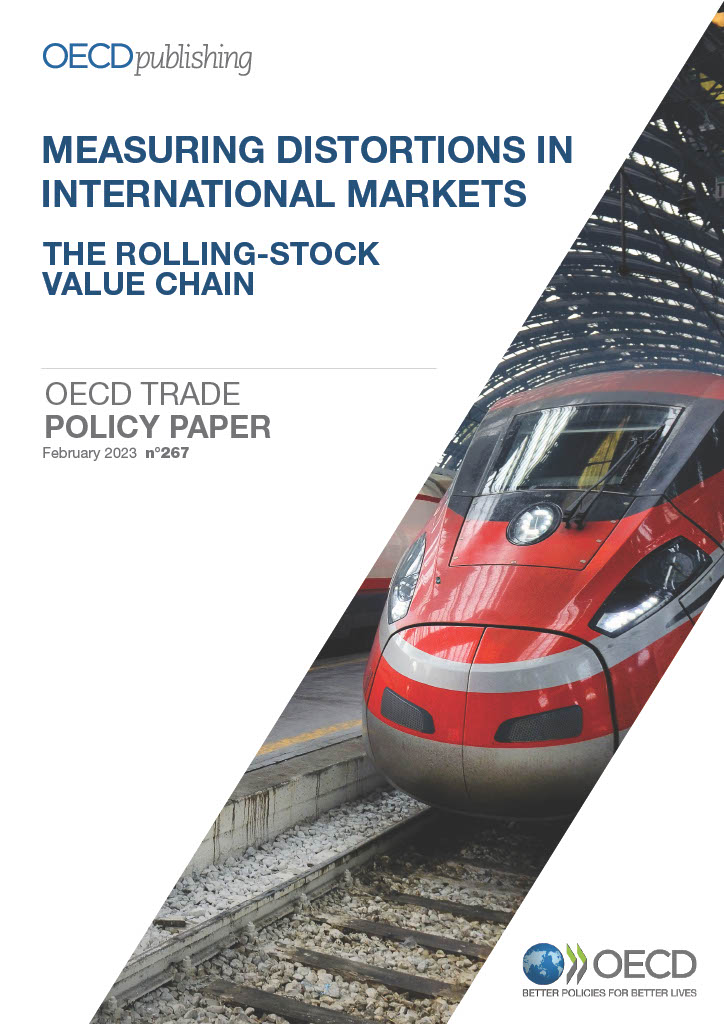OECD Report – Measuring distortions in international markets: The rolling-stock value chain
In April 2021, the OECD decided to select rail rolling stock for the next study on distortions in international markets. The previous studies OECD had carried out in this field concerned semiconductors and aluminum. For the latter especially, the study proved crucial to provide a credible and substantiated case for distortions in international competition, and it has been underlying trade defense cases on aluminum launched by the European Commission ever since.
Government support to producers of rolling stock is raising concerns about possible market distortions and unfair competition. This report aims to quantify both the scale of government support and to identify the various ways in which governments have been supporting local rolling-stock producers at the expense of foreign competitors. Over the period 2016-20, governments provided about USD 5 billion to the sector, much of it in the form of government grants and income-tax concessions. While not quantified, discriminatory practices in government procurement and competition enforcement, forced technology transfers, as well as non-market export credits may have also distorted global competition in the rail-supply industry. Similar to earlier OECD studies of government support in the aluminium and semiconductor value chains, this report helps shed light on the magnitude and ways in which governments subsidise the producers of materials and equipment they view as strategic, with a view to informing efforts to revisit global trade rules.
The report provides an overview of the scope of the rolling-stock industry by splitting it into the different segments, i.e. services (37%), rolling stock (35%), infrastructure (18%), rail control (9%) and turnkey management (1%). It also refers to the industry landscape, mentioning that “the global installed base of train tracks and rolling stock is largely concentrated in the Asia-Pacific, North America and Western Europe. Of the 1.7 million km of train tracks are currently installed worldwide, 72% are found in those three regions”.
According to the report, the Asia-Pacific and Europe largely dominate, for example, the High Speed and Very High Speed segments. On the other hand, North America, Eastern Europe, and Central Asia are the main users worldwide of rolling stock for freight transport. When it comes to the segments of locomotives and shunters, the Asia-Pacific, North America, Russia and Central Asia have the largest installed base of locomotives worldwide”, being still using diesel fuel rather than electricity. On urban transit it is worth noting that Asia-Pacific and Europe top the rankings, with China possessing the largest installed base of metro vehicles, while Europe leads for light rail systems, such as tramways.
On its own, China increased its share of global exports from 4% in 2007 to a high of 18% in 2015, before settling at 11% in recent years. Over the same period, the country saw its share of global imports go from 7% in 2007 to 2-3% in recent years.
Digging into government support (government grants, tax concessions and below-market borrowings), the report analysis 22 companies which represent more than 70% of the global rolling stock market in 2020. Interestingly to mention that CRRC alone obtained almost 60% of all the below-market borrowings and as much as 72% of all absolute support, followed by Chinese signaling producer CRSC (9%).
Click here to download the full report.
